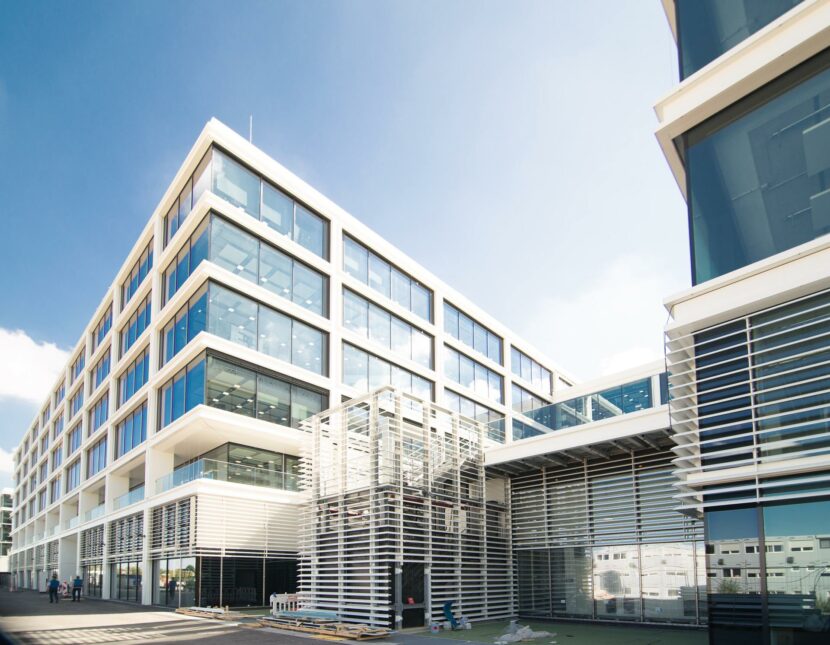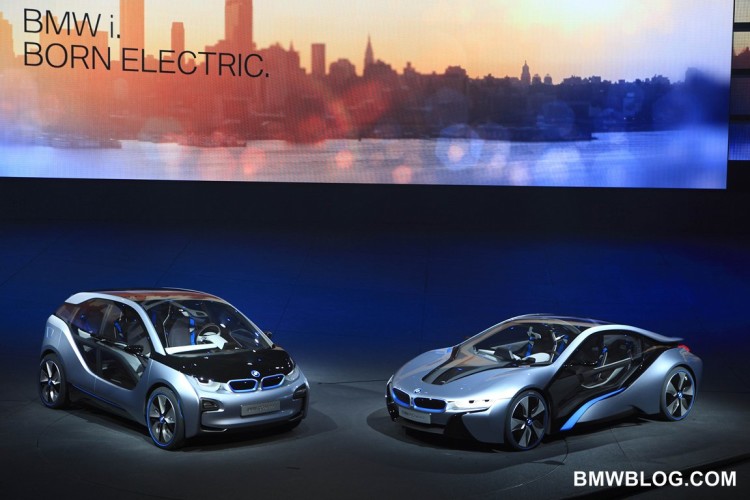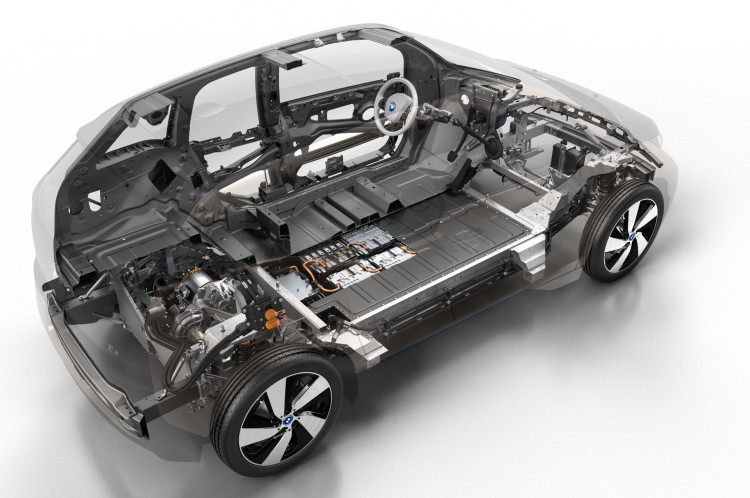The “Neue Klasse” secured BMW’s future. From its introduction in 1961 through the early 1970s the company’s road to expansion was paved by Neue Klasse sales. The acquisition of Glas in 1966 eventually enabled BMW to compete with Mercedes Benz as the 5, 6, and 7 series models were built in Dingolfing. Quandt’s hand picked CEO, Eberhard von Kuhnheim, led BMW from uncertainty to profitability. His leadership forged the BMW that we know. BMW’s ensuing financial stability allowed it to keep the lights on and flesh out their styling, production, and research & development departments.
Rivals and Realignment: BMW’s Position in Postwar Germany
The 1960s saw the dissolution of Borgward’s empire and Daimler Benz’ sale of Auto Union to VW. Their “Beetle” had become the best selling car in history, surpassing the sales of Ford’s iconic Model T. The end of the 1960s would also see VW acquire NSU – maker of the elegantly styled Ro80, which was unfortunately saddled with a far from perfected Wankel rotary engine.
However, VW found itself, at the end of the 1960s, in a predicament as demand for the superannuated Beetle waned. But the recently acquired styling department from NSU would work to VW’s advantage when they moved on from the Beetle. VW also consolidated its Auto Union and NSU makes under the Audi brand – which would eventually become a fierce competitor for BMW. (And the designer of the ground breaking NSU Ro80, Claus Luthe, would later become BMW’s styling department director.)
Mercedes Benz’s status as an aspirational brand suffered as the post-war generation rejected the totems of their parents. BMW’s sporting image was well timed for the coming of age of that generation who, even in the midst of the Cold War, were prosperous. And the American market was ripe for the picking, with the emerging “Baby Boomers” exhibiting heightened brand consciousness.
Laying the Foundation: FIZ and BMW’s Research Revolution
Subsequently the US market was booming for BMW in the 1980s. Then, in the middle of the decade, BMW formed their Research & Development organization. In support of that organization BMW built the Forschungs und Innovation Zentrum, the FIZ, in north Munich – near the old works.
The FIZ allowed all parties involved in bringing a car to market the opportunity to plan and execute the development together. BMW’s model of combining styling, engineering, production, and marketing disciplines together under one roof would become the model for the industry. The FIZ provided the ideal environment to explore new technologies and solutions to foreseeable regulatory issues.
Emissions, Regulations, and Early EV Experiments
In the 1970s regulations regarding tailpipe emissions began to be introduced in Europe and North America. The California Air Resources Board (CARB) was tasked to find solutions to air quality problems facing the state. The bill that created CARB was signed by then California governor, Ronald Reagan, and the initial focus was on reducing smog in the Los Angeles basin. Manufacturers initially struggled to meet the emissions and fuel economy regulations (the ‘eta’ engined BMW 528e, for example – interesting but unloved technology).
Before long climate change would become a regulatory issue; it was in the 1970s that the media began reporting on climate. The issue had attracted academics and eventually government agencies attention with a view towards mitigating the impact of climate change with additional regulations.
California promulgated a requirement in 1990 that manufacturers must accumulate credits for selling Zero Emissions Vehicles as a percentage of their total sales. That led to electric vehicle experimentation, including GM’s EV1 and BMW’s E1, both the Z11 and Z15 prototypes. While BMW had built the electric 1602e for the 1972 Olympic games and, in 1975, the 325ix based LS Electric, those were narrowly focused projects and not applicable in the new regulatory environment.
The E1s (Z11 and Z15), however, were practical prototypes that BMW used to explore electrification for ‘city’ cars. Neither the Z11 or Z15 were fast, with a top speed of around 80 mph, and they had limited range, given battery technology and what little space was available to house the battery pack.
The E1 was BMW’s foray into determining how to build electric cars. Materials, production processes, and performance were explored. While, ironically, the Z11 prototype burned to a crisp, the Z15 survived and an eventual E2 prototype was built. All of these prototypes emphasized passenger space, in a small package, over performance. And BMW was reliant on external suppliers for electric motors and batteries as they had yet to build their own electric motors or battery packs.
Alternative fuels for vehicles were also pursued. BMW built natural gas and hydrogen fueled internal combustion engines in the 1980s. These included several 7 Series Hydrogen prototypes and the 316g and 518g natural gas fueled cars.
Alternative Powertrains and the Rise of Hybrids
In the late 1990s, early examples of hybrid vehicles came to market, the most notable of which was the Toyota Prius. Market demand for production hybrid vehicles was unknown and led one US based Toyota marketing person to wonder if they would sell. That marketer’s fears proved to be unfounded as the Prius could now be a standalone sub brand if Toyota so wished.
BMW’s commitment to reduce tailpipe emissions and improve fuel economy led to the EfficientDynamics program. BMW built hybrid prototypes like the E34 518iev in the middle 1990s, to explore hybrid technology and market viability. However, increasing regulatory pressure for more ‘zero emissions vehicles’ would effectively demand that purely electric vehicles be added to a manufacturer’s offerings.
MINI E and ActiveE: Real-World EV Testing Begins
In 2009 introduced the MINI E to a limited number of people in select markets. These purely electric powered MINIs were leased with no opportunity to purchase the vehicle at the end of the lease term. BMW followed the MINI E project with the BMW ActiveE which was essentially a BMW 1 Series coupe with an electric drivetrain. The same lease conditions were enforced for the ‘Active e’ and BMW used maintenance data and customer feedback to refine their approach to electric cars.
While the MINI E and ActiveE were in service, BMW was preparing for the next step in their electrified portfolio. In June, 2011, approximately two months before the Frankfurt IAA show, BMW presented the i3 and i8 concepts to the international automotive press (BMWBLOG had a sneak peek at the i3 chassis at the FIZ in April 2011).
Project i Comes to Life: The i3 and i8 Revolution
The i3 and i8 were the first outputs of BMW’s “Project i”, their sub-brand focused on electrification. However they came close to not going into production, there was quite an internal debate whether or not to treat these as prototypes or to actually press forward with building them in volume. It was a risky proposition, given the technology required for manufacture, but the decision was made to proceed. And in 2013 the first examples rolled off the Leipzig assembly line.
BMW utilized an impressive High Pressure Resin Transfer Moulding process to create the carbon fiber passenger compartment structures for both the i3 and i8 along with a “fingers and palm” layout for manufacturing them at the Leipzig plant. The motors were built by BMW and the battery packs were assembled by BMW. BMW had planned on bringing an all-electric i5 to production but that product was cancelled in 2017. BMW did introduce the iX prototype in 2018 and brought it to production. They had crossed the line into full fledged electric vehicle production. While these Project I cars were built on bespoke platforms, BMW pivoted to producing electric vehicle offerings on the existing CLAR platform.
From Project i to Neue Klasse: The Evolution of BMW EVs
The current BMW all-electric offerings are built on existing platforms using the fifth-generation eDrive system which includes the electric motor, transmission and power electronics into a single small centralized housing. BMW now offers the i4, i5, iX, and i7 along with the iX, iX1, iX, iX3, and iX2. MINI offered the MINI Cooper SE, Countryman SE, and MINI Aceman. Topping the charts is the Rolls Royce Spectre. While these cars are built on BMW’s existing platforms, the next iteration of BMW’s “Project i” will introduce electric vehicles on an all new platform, the next Neue Klasse.










